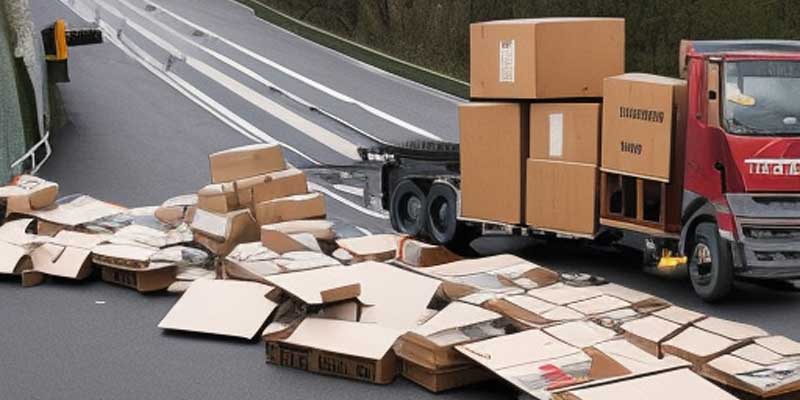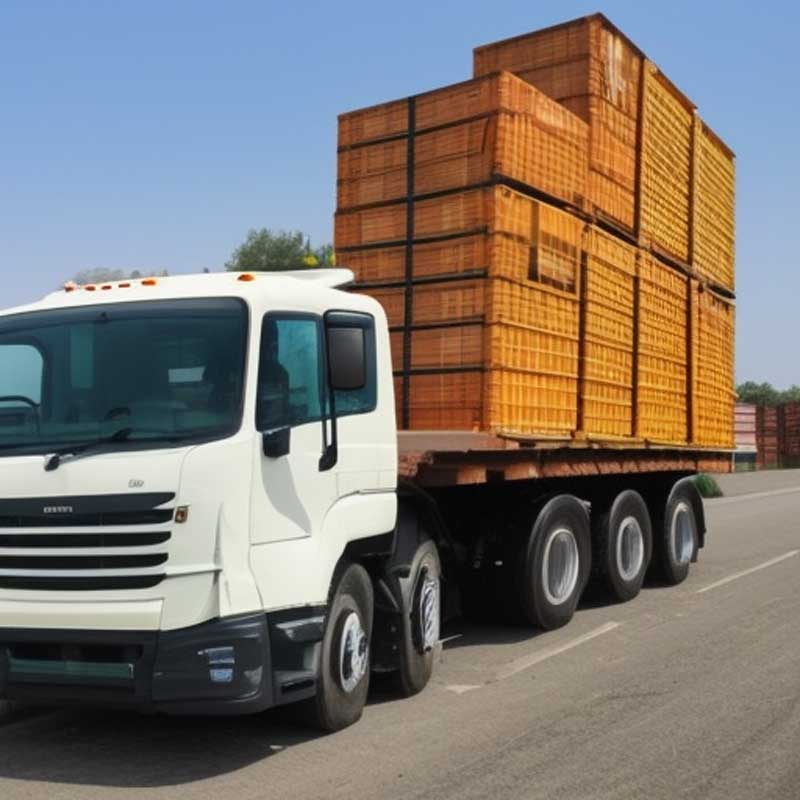
HGV Stability
and the factors than can wreck it


and the factors than can wreck it
a heavy goods vehicle is happiest when it is being driven at a moderate speed, under very light acceleration, in a straight line, on a level surface. It should also ideally be correctly loaded in accordance with the specifications that it was originally designed for. That is the ideal situation, which as we all know very rarely exists.
What they do not like is braking, particularly if it is heavy or whilst the vehicle is going around a bend. Sharp manoeuvres can make them difficult or even impossible to control.Badly distributed, too heavy, or even too light loads can make them unstable.
For all these reasons good anticipation of necessary manoeuvres is an essential skill for drivers to develop, so that they will have plenty of time to react to the numerous hazards that are placed in their way every day, whether these are road conditions and layouts, pedestrians, animals, bad weather, or other irresponsible drivers. all of these factors are greatly magnified if the vehicle is towing a trailer.
For the drivers to stay in full control of the vehicles it is important that they know about the different factors that affect stability, and the main ones are:
A well-designed heavy goods vehicle has adequate brakes to enable it to slow down or stop without any loss of control; but this depends upon many factors. A heavily laden vehicle requires far more braking force than an unladen one, particularly if it is going down a steep hill; and the longer the hill the more danger there is of brake fade. this can be compensated for by the driver selecting the most suitable gear before arriving at the hill or by the use of engine brakes.
Heavy braking can cause a load to shift; this can not only damage the load, make the vehicle unstable but quite possibly endanger the safety of drivers who are not sufficiently protected against this possibility.
Brakes have to be well-balanced; if they are not then under heavy braking the vehicle can swerve. Those on a trailer must also be well-balanced and in sync with those of the towing vehicle; otherwise there could be a danger of it swinging out and endangering the control of the vehicle.
Since 2015 most UK HGVs have been fitted with Advanced Emergency Braking Systems (AEBS); these depend on radar or cameras to detect a possible collision with a vehicle in front and they are capable of applying far more braking force that the driver could apply, hopefully stopping the vehicle before the collision actually occurs. Heavy braking is not what you want to do in a HGV though, so this underlines the need for drivers to always be alert and able to anticipate problems.
The length of a vehicle can sometimes be dictated by the type of goods that are to be carried. Longer vehicles have greater longitudinal stability (this means that they are far less likely to spin) but against that they have less transverse stability so there is more possibility of them being turned over if they are affected by high winds, excessive cornering, bad road camber or a combination of all three. This can be compensated to a degree by increasing the track; but there is a limit to how wide you want a vehicle to be, and there are legal limits in any case.
A possible problem with longer vehicles is grounding when they go over humps or bridges in the road. This can be compensated for by increasing the ground clearance but this in turn raises the centre of gravity which can create all sorts of problems of it's own.
They can also be very difficult, and need a lot more room, to manoeuvre; in particular driving around small roundabout can often be very difficult so it is important for the driver to anticipate this in good time and select a suitable route for entering and leaving it.
Short wheelbase vehicles can bounce more readily on a bumpy surface, particularly if they are empty are only carrying a light load. They can be easier to drive; however this can be a drawback if the driver is tempted to go into corners or bends at a higher speed than it is safe to do so.
For maximum stability and resistance to toppling over the centre of gravity of a vehicle should be as low, and as close to the centre, as possible; because once it moves outside the track, because of high winds, excessive speed on cornering or bad road camber, the vehicle could capsise. It is vital that loads are not stacked so high as to raise the CofG to a dangerous level; and the common cause of this is stacking fairly light cargoes which still remain within the permitted weight loading of the vehicle. One particular danger is straw or hay which may well be stable enough under dry conditions, but during periods of heavy rain the top layers can become heavy with water making the load completely unstable. Sheeting over is therefore essential.

Whilst it is vital to not exceed the loading weight that the vehicle carries, how it is distributed is very important as well. More weight to the front means less weight on the rear wheels, which can cause them to break away when cornering; more on the back makes front wheels lighter with less grip on the road, so steering is less responsive. These problems are magnified during braking because, as a vehicle brakes, the weight of the whole vehicle moved towards the front meaning less traction at the rear. Conversely, when a vehicle accelerates the weight load shifts to the back wheels, again making the front wheels lighter.
If the vehicle is moving uphill more of the loading is transferred to the rear wheels; and if downhill the opposite happens and more weight is transferred to the front.
It is therefore clear that the relative loads on each axle have to be in accordance with the design of the vehicle, just as the overall maximum weight is. If the vehicle is moving uphill more of the loading is transferred to the rear wheels; and if downhill the opposite happens and more weight is transferred to the front.
It is vital that the load is stable and not able to move during the journey and so suitable restraints may well be necessary; and do remember that if the vehicle is a tipper, when the back is raised the centre of gravity will rise with it, which is why it is essential that dicharging a load should only be carried out on firm, level ground.
For a vehicle to function at all there must be friction between the tyres and the road surface. This can be affected by the surface of the road (i.e. antiskid, loose, potholed); contamination on the surface (oil, leaves, mud etc) or rain, hail or snow.
If any, or a combination, of these factors are present there is a greater risk of a vehicle becoming unstable during braking, acceleration, or sudden manouevres. Turning and braking simultaneously should always be avoided if possible, particularly at high speed. Excessive braking or acceleration can cause wheelspin, skidding or even overturning.
Bad weather can make driving difficult particularly for heavy goods vehicles that need plenty of room to slow down in. During periods of heavy rain the road around the next bend may be flooded; snow can drift into a carriageway that is inadequately protected at the sides; and ice can remain in shaded dips in the road long after it has disappeared from the rest of it.
A heavy goods vehicle is designed for a particular purpose. Some may for instance be required to carry fragile goods, which would normally require softer springs to prevent damage to the cargo over bumpy roads; however if carrying a heavy load this could cause a vehicle to sway with consequent instability. Box vans are designed to take light but bulky loads; stacking heavier items too high can raise the centre of gravity and so make the vehicle unstable if it is combined with adverse camber, wind or poor driving. A lorry may be designed to carry a load of sand, bricks, or other aggregate; but if it carries lighter items there is a risk that they could bounce or be blown off the vehicle causing danger to other road users unless they were adequately secured.
This is where it is necessary to use common sense in deciding just what a vehicle should be used for; HGVs are not all the same.